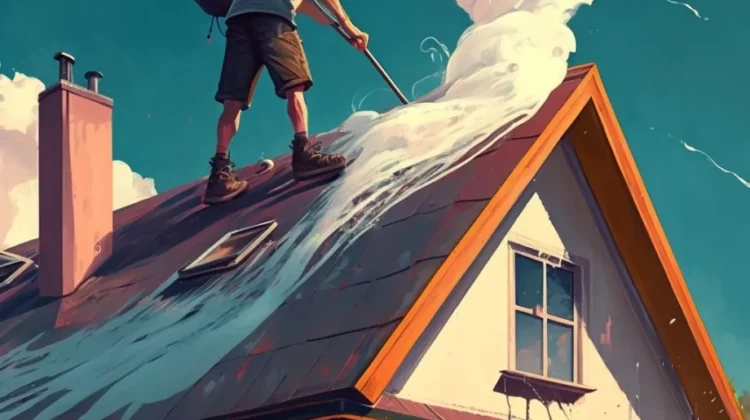
Spring is the perfect time to give your home a good deep cleaning, and one area that often gets overlooked is the roof. A clean roof not only improves the appearance of your home but also helps extend the life of your roof by removing damaging debris and preventing mold and mildew growth.
Here is a spring cleaning checklist to help keep your roof in top condition:
Check for Damage
Before you start cleaning your roof, you must check for any damage that may have occurred during the winter months. Look for missing or damaged shingles, cracked flashing, or any other signs of wear and tear. If you notice any damage, address it promptly to prevent further damage and leaks.
Clean Gutters and Downspouts
Blocked gutters and downspouts have the potential to lead to water buildup, resulting in potential damage to both your roof and home. Spring is the perfect time to clear out any debris that may have accumulated during winter. Use a gutter scoop or trowel to remove any leaves, twigs, or other debris from your gutters, and flush them with a hose to ensure they flow freely.
Remove Debris
Debris, such as leaves, branches, and pine needles, can accumulate on your roof and trap moisture, leading to mold and mildew growth. Use a leaf blower or broom to remove any debris from your roof, particularly in areas around chimneys and other roof penetrations where debris accumulates.
Trim Trees
Overhanging branches can damage your roof and allow pests to access your home. Trim back any overhanging branches to prevent them from rubbing against your roof and causing damage.
Remove Moss and Algae
Moss and algae can grow on your roof and cause damage if left unchecked. Use a soft-bristled brush or pressure washer to remove any moss or algae from your roof, being careful not to damage your shingles. There are also special cleaners available that can be applied to your roof to help prevent moss and algae growth.
Inspect Flashing
Flashing around chimneys, skylights, and other roof penetrations can become damaged or corroded over time, leading to leaks. Inspect your flashing for any signs of wear and tear, and replace it if necessary.
Check Attic Ventilation
Proper attic ventilation is important for maintaining the health of your roof and preventing mold and mildew growth. Check your attic ventilation to ensure it is functioning correctly, and consider adding additional vents if necessary.
Inspect Chimney and Skylights
Chimneys and skylights are common areas where leaks can occur. Check the flashing around your chimney and skylights for any signs of damage or wear and tear. If you notice any issues, it’s best to address them promptly to prevent further damage and leaks.
Check for Pests
Pests such as rodents, birds, and insects can damage your roof and create entry points for water to enter your home. Check your roof for any signs of pests, such as chewed shingles or bird nests, and take appropriate action to remove them.
Hire a Professional Roofing Contractor
If you are uncomfortable performing any of the tasks on this checklist, hiring a professional roofing contractor is always best. A roofing contractor has the knowledge, experience, and equipment needed to safely and effectively perform a thorough spring cleaning of your roof.
In addition to spring cleaning your roof, it’s also important to schedule regular roof inspections and maintenance to ensure the health and longevity of your roof. A professional roofing contractor can provide regular inspections and maintenance services to catch issues early and prevent costly repairs down the road.
Spring cleaning your roof is an essential part of maintaining the health and longevity of your roof. By following this checklist and scheduling regular inspections and maintenance, you can ensure that your roof remains in top condition for years. Remember, if you are uncomfortable performing any of these tasks, hiring a professional roofing contractor is always best to ensure the job is done safely and effectively. With a little effort and attention, you can keep your roof looking great and functioning properly
